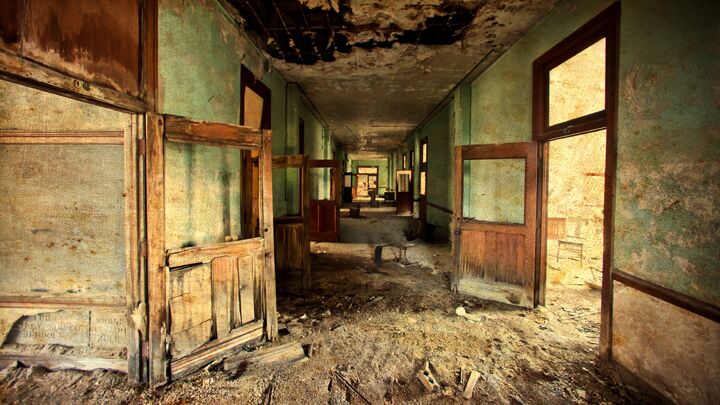
Detroit’s Gone to the Dogs
Roughly 50,000 stray dogs are wandering the streets of Detroit, intimidating the bankrupt city’s shrinking number of people, overwhelming its animal-control organizations and rapidly breeding.
Some of the animals are technically claimed by a city resident but allowed to roam the streets unsupervised. Most, though, have been permanently abandoned after their owners left the dying city, were incarcerated or became too cash-strapped to care for a pet. Many of the animals were born to abandoned mothers and are completely feral.
According to reports published Wednesday, some of the Motor City’s boarded-up houses have become home to as many as 20 stray dogs. Many of the animals are emaciated and starving, which can provoke bouts of aggression in them. “They haven’t eaten,” said Detroit resident Freddie Parker. “If I hadn’t eaten in over a week, I’d be vicious too.”
The dogs have killed pets and livestock. They have also congested the city’s animal shelters where almost 80 percent of them are euthanized. Most worryingly, the animals have attacked hundreds of city residents, with a record 903 dog attacks on people reported there in 2012.
One of those victims was a 3-week-old girl who was mauled to death by a pit bull as she sat in her car seat. Another was a woman sitting on her porch on the city’s east side when two stray pit bulls attacked her, ripped her scalp off and left her in critical condition. Other such reports are not uncommon. Because of Detroit’s rampant dogfighting circuits, pit bulls dominate the city’s stray populations. Male pit bulls are aggressive in mating, so they disseminate their genes faster than most other breeds.
Yesterday, the Detroit Free Press reported that residents in some northeast Detroit neighborhoods are worried less by dogs than by a supersized cat roaming their streets. It’s unclear whether the cat is feral or domesticated or what species it is, but a picture taken by resident Nathan McGuire shows that it is about four feet tall. “I’ve never seen a cat that big — even on TV,” McGuire said. Locals have requested help from city police and Animal Control, but haven’t yet received a response from the skeleton crews of these services.
Detroit—once an auto-manufacturing powerhouse with a population of 2 million—is now down to just 700,000 residents. And it’s now down to just four animal catchers to cover the entire 139-square-mile city (an area large enough to fit San Francisco, Boston and Manhattan inside of with space to spare) seven days a week. Amanda Arrington of the Humane Society recently visited the city and was shocked by the widespread devastation and by the animals roaming the streets. “It was almost post-apocalyptic,” she said, “where there are no businesses—nothing except people in houses and dogs running around.”
Long before Detroit and the rest of America was established, God promised that the nation would grow to become astoundingly prosperous (Genesis 48:14-22; 49:22-26).
God also revealed clear specifics of how He would curse the U.S. if it refused to obey His law: “And if ye walk contrary unto me, and will not hearken unto me; [I will] send wild beasts among you, which shall rob you of your children, and destroy your cattle, and make you few in number; and your high ways shall be desolate” (Leviticus 26:21-22). Ten years ago, no one would have thought the mighty city of Detroit could come to match this apocalyptic description. Yet, today the portrayal is frightfully accurate for parts of the city and the problems are spreading.
Why is it happening? Broken families, gang activity, corrupt politics and crime became pandemic in Detroit. Its people began pushing God out of every facet of their lives, transforming it into a lawless city. As a result, the blessings it once enjoyed are being rapidly replaced with curses.
The deteriorating Motor City carries a lesson for the whole country. Trumpet columnist Robert Morley explains: “Detroit’s plight is a gigantic, flashing warning sign for the nation. … Detroit has gone from one of the most prosperous cities in the world, with the highest standard of living, to one of the world’s poorest. … Now the same thing is happening to many American cities. Despite America’s unparalleled agricultural, mineral, scientific and geographic resources, cities across the country are in various stages of Detroitification.”
To understand why Detroit has gone to the dogs, and the lessons the rest of the U.S. should learn from the tragedy, read Mr. Morley’s article in the Philadelphia Trumpet’s September issue, “Detroit Bankruptcy—Nothing to See Here.”
